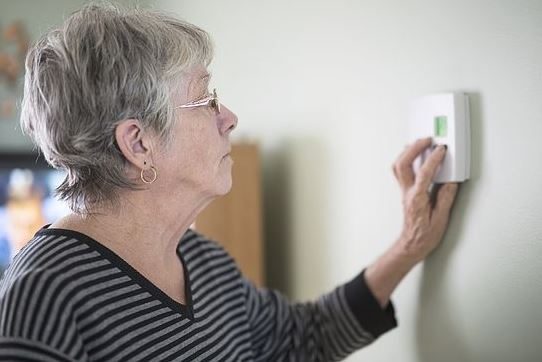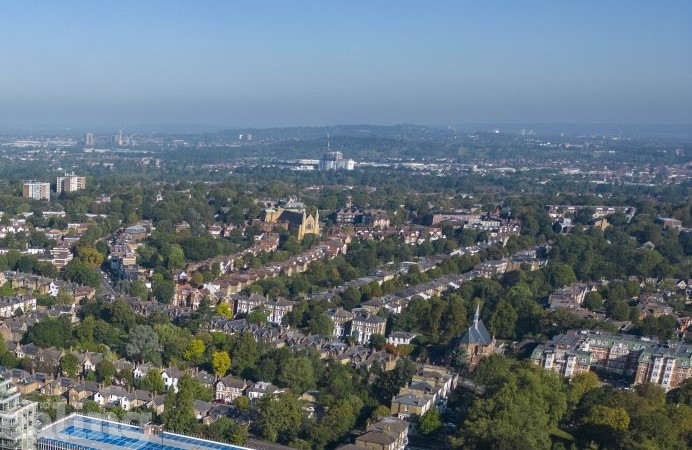UPDATED ON 17 OCTOBER AFTER GOVERNMENT ANNOUNCEMENT
Households are facing rising energy costs – and the price cap rise on 1 October (Saturday) is causing widespread concern about how some will be able to afford to heat and power their homes.
Here, we try to explain what has happened – and where you might be able to find some support. We also provide some tips most people can follow.
Ealing Council’s website has a section explaining what support is available during the cost-of-living crisis, in general. The support is being offered by many organisations via different routes. The webpage brings all the options together in one place to make it easy to see exactly what you might be able to access, and how to do it. This includes support with energy bills – which is what we will look at in this article.
Energy bills
The End Fuel Poverty Coalition estimates that 23.6% of the UK is already living in fuel poverty, which is defined as a household that spends more than 10% of their disposable income on fuelling their home.
Ofgem sets an ‘energy price cap’ limiting how much you can be charged for the energy you use. You can read more about this price cap and why it exists further down in this article.
From 1 October, this cap goes up by 80% for 24 million people in England, Scotland and Wales. This would see the price cap rise to £3,549 a year, an increase of £1,578. The increase was expected to plunge an additional 15 million households into fuel poverty (up to 32% of UK households).
However, the government recently announced a new ‘Energy Price Guarantee’ to help to counteract this. It will restrict the amount we have to pay energy firms over the next six months until 1 April 2023.
It will mean a typical UK household would now pay up to an average £2,500 a year on their energy bill for the next two years. This is automatic and applies to all households. However, this cap does not mean that you will not pay above £2,500 per year, because this figure is based on an ‘average use’. If your home uses an above-average amount of energy, you may pay more than the cap. It is in addition to a one-off £400 energy bills discount being applied to all households from October (this will mean £400 in total, spread across a few months of bills).
| Property type | Under October price cap | Under government Energy Price Guarantee | Difference |
| All dwellings | £3,550 | £2,500 | £1,050 |
| Houses | £3,800 | £2,650 | £1,150 |
| Detached | £4,700 | £3,300 | £1,400 |
| Semi Detached | £3,800 | £2,650 | £1,150 |
| End Terraced | £3,500 | £2,450 | £1,050 |
| Mid Terraced | £3,300 | £2,350 | £950 |
| Bungalow | £3,500 | £2,450 | £1,050 |
| Flats | £2,450 | £1,750 | £700 |
| Converted flat | £2,750 | £1,950 | £800 |
| Purpose built flat | £2,400 | £1,750 | £650 |
Obviously, this is much better than the Ofgem price cap rate of £3,549. But up to £2,500 a year is still worryingly high for many people – and more than almost all of us will be used to paying.
The latest available figures on fuel poverty highlight that our borough has the third highest fuel poverty rate in west London, impacting around 15% of households in the borough in 2021. This figure could rise significantly, with more residents having to increase financial outlay to cover soaring prices.
‘Please seek help if you need it’
Ealing Council’s leader Peter Mason said: “Price increases will not simply impact the most vulnerable in our borough, those typically impacted by fuel poverty, but also those who work from home or do shift work and are more likely to use energy during peak daytime hours. Those in older, less insulated homes will also be affected disproportionately, because older homes tend to have much higher energy usage.”
Councillor Bassam Mahfouz, the council’s cabinet member for decent living incomes, said: “The council is trialling electric-only heating options in a number of our council homes, with the aim of switching away from gas and saving on tenant’s energy bills as soon as it is possible to do so.
“But anything any of us can do to cut our energy use now, without making our homes cold, could prove to be a useful defence against the rises, so please see the tips in this article. Even more importantly than this, however: Please seek help if you need it. There is some support, from a variety of places. The council’s Cost of Living web page is a useful place to start to see what is available, but our Healthy Homes Ealing service is also there for you – and you can find out more about it in this article.”
Councillor Mason added: “This is going to be a hard winter for many, and we will all need to help each other through it. If you know someone who might be particularly affected, please keep an eye on them and point them to where they might be able to get additional help.”
What can I do about my tariff?
The general advice to all households is to not switch tariffs or providers unless you have no choice (such as when moving homes, installing solar PV, etc).
If you are on a Standard Variable Tariff, do not switch.
Big London Energy Switch suggests that you might want to stay on your Standard Variable Tariff. Your current energy supplier may offer you a fixed tariff which you might consider accepting if it is cheaper than remaining on the Standard Variable Tariff. This is unlikely right now. Be prepared for your bills to rise after the Price Cap increases in October – there is no avoiding this.
If you are on a fixed tariff, do not switch.
Assuming you fixed your tariff before the rises in the market, this is likely to represent a good deal compared to what is in the market now, so you will want to stay on your fixed tariff until the end of your contract.
If your contract ends soon, your energy supplier will move you to its Standard Variable Tariff if you do not switch. Your current energy supplier may offer you a fixed renewal tariff which you might consider accepting if it is cheaper than remaining on the Standard Variable Tariff. This is unlikely right now.
What can I do to reduce my energy use?
The most important step all households can take right now is to improve the energy efficiency of your home. Start by reducing your home’s energy use through simple behavioural changes, such as turning off lights when you are not in a room, lowering your thermostat by 1-2 degrees when you can, and by using your microwave or small appliances such as an air fryer, a slow cooker or a crockpot to cook or warm your meals.
The council is currently working on ways to improve the energy efficiency of its council housing – with pilot schemes for several electric-only heating options, installation of ground source heat pump systems, and whole-house retrofit models.
It will not be an option for everyone but, like in some of those council properties, if you are able to afford to install solar PV panels and/or battery storage, this will reduce your reliance on the energy grid and save you money.
Likewise, insulation is one of the most effective measures to install, especially in lofts and cavity walls, because these can be relatively inexpensive measures which will pay for themselves even more quickly in the current market. Solid wall and underfloor insulation can be more expensive, but there are grant programmes which can help you with this cost if you are low-income or in a home with a low EPC (energy performance certificate) rating.
Some other more basic tips to stay warm in winter, which you can consider doing right away, include:
- Draughtproof any gaps through which air can escape from your home. This includes doors, windows, letter boxes, and – where possible – keyholes. You might consider putting a curtain across your front door, to draw across in the evenings, or simpler items like draught excluders at the bottom of doors
- Look at putting a timer on your central heating thermostat to maintain a constant temperature in the home. Heating the home to 18 – 21 degrees Celsius is considered a healthy range
- Avoid heating rooms that are not in use
- Use energy-saving LED lightbulbs (which are easy to buy in shops and online)
- Place reflective panels behind radiators, where possible, to prevent heat loss
- Avoid obstructing radiators, or drying clothes on them, to make sure that the heat is spread throughout the room
- During winter, open your curtains during the day to let warmth in and close them again at dusk to trap the heat in
- Contact the Healthy Homes Ealing freephone telephone number on 0800 083 2265 for energy advice and information on support available (available Monday-Friday from 9am – 5pm) – see more below.
Do you need help with your energy worries?
Nearly every household in the UK will see their energy costs rise, so any measures you can take to reduce your home’s energy use now will pay off for years to come. Whether you own or rent your home, there are measures you can take to reduce energy.
Healthy Homes Ealing provides free energy advice for all Ealing residents via the freephone number 0800 083 2265 (available Monday–Friday between 9am–5pm). Calling this number will put you in touch with energy advisors at Groundwork London, a city-wide charity, who will then provide impartial, free, energy advice, including:
- Energy bills, tariffs, and suppliers
- Managing fuel debt and arrears
- Insulating homes
- Referrals to trusted installers for large energy efficiency works, available grants, and advice on financial assistance.
You will also be screened for eligibility for a free telephone consultation or home visit from one of Groundwork London’s ‘Green Doctors’, who offer energy expertise. These consultations will:
- Assess your energy use in the home, offering advice for improvement
- Check existing heating controls, such as thermostats, radiator and storage heater settings, and boiler/hot water settings
- Check your eligibility and suitability for large-scale energy efficiency measures, including loft, floor, and cavity- or solid- wall insulation, low-carbon heating systems, first time central heating, etc. including eligibility for funding through the Green Homes Grant, Home Upgrade Grant, ECO4, Warmer Homes, LEAP, council and national grant schemes
- Check your energy tariff to see if it is the best for you
- See if you need assistance managing bill arrears and fuel debt, as well as income maximisation and benefits checks.
In-person visits also include installation of small measures, such as draught-proofing, radiator reflectors, chimney balloons, door-sweeps, and more.
You can find more information about the Healthy Homes Ealing service by visiting the page on the council’s website.
Remember, also to check the council’s cost of living help page on its website we mentioned earlier.
The West London Green Homes Grant: Local Authority Delivery Scheme
The GHG:LAD scheme is open to landlords and homeowners of homes with D, E, F, and G ratings on their energy performance certificates (EPC). It operates across west London until March 2023. The GHG:LAD scheme offers grants for energy efficiency measures, including insulation, low carbon heating systems, solar PV, and replacement of single-glazing windows.
To be eligible, the total household income must be below £30,000-per-year (and up to £20,000 in housing benefits). Landlords may apply on behalf of eligible tenants, but must agree to cover one third of the cost of works (owner occupiers do not have to contribute towards the cost of works). If you believe that you or your tenant may qualify, you can call 0808 196 8255 and ask to be screened for the GHG:LAD programme, or you can register for the scheme online.
Why was the energy price cap introduced?
In January 2019, the energy price cap was introduced by the UK’s energy regulator, the Office of Gas and Electricity Markets (Ofgem), as a means of ensuring that energy suppliers are resilient in times of fluctuation in the fossil fuel markets and less likely to fail. The aim of the price cap is to protect households on standard variable or default energy tariffs from short-term, sharp, price rises in the cost of energy, however the price cap increases have led to a once-in-a-generation increase in energy costs, not seen since the oil crisis of the 1970s.
The cap limits the amount that a supplier can charge for their default tariff. It includes:
- The standing charge (a fixed daily amount you have to pay for energy, regardless of how much energy you use)
- The price for each unit of electricity and gas (measured in pence per kilowatt hours, or p/kWh).
The price cap is based on ‘typical annual usage’ of 12,000 kWh and applies only to households on a standard variable tariff. If you are on a fixed-term contract, your tariff is ‘locked’ for one to two years, dependent on your contract with your energy supplier. Some ‘green’ or ‘time of use’ tariffs may also be excluded from the price cap.
On 1 October, the price cap will rise to £3,549 a year, an increase of £1,578. Ofgem has already warned that this is very likely to be hiked up again in the new year, with analysts suggesting it could rise by £1,838 to an annual cost of £5,387.
However, it is important to note that the energy price cap is not a cap on your total bill. It simply caps the price of each KwH you use, so your final bill total does not have an upper limit, it is dependent on individual usage It also does not apply to fixed-term energy deals.
Why is the cap increasing?
The cap on what you spend on energy is based upon how much the energy companies pay suppliers for that energy. So, when the cost of producing energy goes up, this has a knock-on effect to you, the consumer. Factors such as the ongoing war in Ukraine have reduced the supply of readily available sources of energy, contributing to an increase in cost of gas in the market. While the UK only imports 10% of its gas from Russia, the overall market instability has caused prices to rise.
Previously, the cap was reviewed on a six-monthly basis. With the shifting landscape of current energy markets, this has changed. The price cap is now reviewed by Ofgem on a three-monthly basis, which has introduced price volatility to consumers. This is why, as stated above, there will be additional rises in 2023, following the upcoming increase in October 2022.





